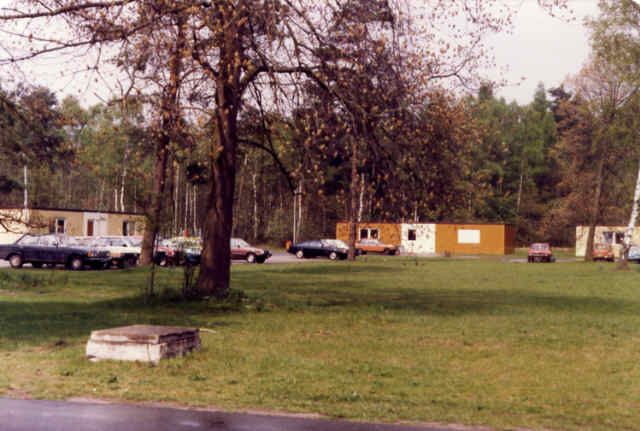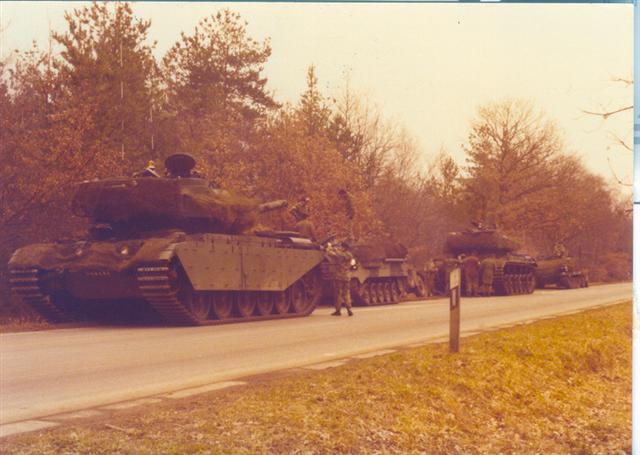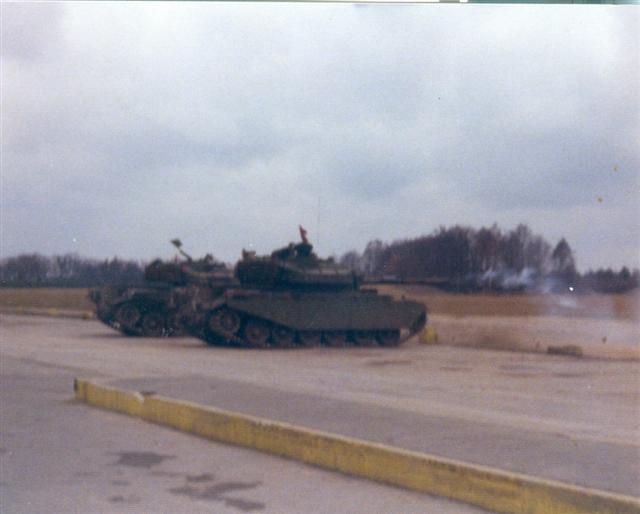Built – Between 1935 and 1938
Original Name: Heeresversuchstelle Munster-Nord, aka; Heeresversuchsstelle Raubkammer
Type: Werhmacht
History: Built as a Nazi chemical weapons test site. Then used as a British camp. Now a civilian housing/industrial estate.
Updated 27 August 2024
Home to:
School of Artillery British Army of the Rhine (1)
15th Medium Regiment RA (2)
7 Battery – 38 Battery
(1) from Alanbrooke Barracks 1 Oct 46 – disbanded 31 Dec 48
(2) from Alanbrooke Barracks early 49 – less one Bty
More to follow
Source: 21st Army Group later British Army of the Rhine to Mar 49
Part II
3 Royal Horse Artillery Nov 1950 – Feb 1954 (1)
94 Locating Regiment RA 1954 – 1956 (2)
6 Field Regiment RA 1956 – 1962 (3)
18 Regiment RA 1962 – 1965 (4)
4 Field Regiment RA Aug 1966 – Feb 1974 (5)
25 Field Regiment RA Sept 1973 – Jan 1978 (5 & 6)
32 Amoured Engineer Regiment RE Jan 1978 – 1993
1 Armoured Division Transport Regiment RCT 1978 – 1984 (7)
(1) Arriving from Caithness Barracks, Verden.
(2) Arriving from Yeovil Barracks, Munsterlager. Then departing for Celle in 1956.
(3) Comprising H, V, and W Batteries. W Bty into suspended animation 1958, 132 Fd Bty joined Regiment.
(4) On leaving the Regiment moved on for Hong Kong.
(5) These units were equipped with 105mm Abbot SP gun, supported by Centurion tanks and AFV 432 command vehicles. Also 6 wheeled Stalwarts, Bedford 4ton and Land Rovers. In 1979 the formation of battle groups was beginning where there was an amalgamation of different units, i.e. infantry company and tank troop etc all in one barracks. There was also an Army Air Corps flight here. 25 Fd Regt Gun Batteries were 35, 54, and 93. During this period, 54 Bty deployed to BATUS on exercise. Photographs of the exercise can be found here, courtesy of Morris Felton.
(6) On handing over, 25th Fd Regt RA departed for Barker Barracks, Paderborn, with 5 Battery joining from 19 Regt.
(7) In 1984 1 Armd Div Tpt Regt RCT merged with 2 Armd Div Tpt Regt RCT retaining the number 1 in the title, but relocating to Birdwood Bks in Bunde. 38 Sqn RCT occupied Wrexham Bks in Mulheim, which it shared with the Higher Education Centre.

The “Model Village” in Dennis Barracks Munsterlarger, used by 13 Ord Coy in 1983/84 time.
Courtesy of Mr Mick Greenhalgh
1 Armd Div Tpt Regt RCT occupied Dennis Barracks, Munsterlager having relocated from Liebenau and Nienburg. They stayed in Dennis Kaserne in the period of 1978 – 1984 during which time they shared the camp with 32 Armd Engr Sqn, and latterly with 32 Armd Engr Regt. In 1984 1 Armd Div Tpt Regt RCT merged with 2 Armd Div Tpt Regt RCT retaining the number 1 in the title, but relocating to Birdwood Bks in Bunde. 38 Sqn RCT occupied Wrexham Bks in Mulheim, which it shared with the Higher Education Centre. In 1993 the Sqn rebadged to the RLC and disbanded in 1994, handing over the Barracks to the Stadt authorities in August 1994. The HEC had moved to Rhinedalen about 7 months earlier.
Sanda
How it was. RHQ 1973.
Courtesy of Patrick Butterly
The barracks was home to 18 Field Regt RA. My father took over as RSM in 1965. They had 2 batteries of 25 pdr and 1 of 5.5″ guns. There was also an AOP flight from the AAC with Saro Skeeter helicopters. In 1966 the Regt was deployed to Hong Kong as 18 Light Regt to support 48 (Gurkha Infantry) Brigade. Interestingly, the emergency power station (from the Wehrmacht time) was equipped with a pair of U-boot Maybach diesel engines.
Roger

Main Road
I served in 26 AES when we moved from Hohne to Munsterlager, and I remember that an RCT Regiment also shared the barracks with us (can’t remember their number, possibly 12). I was a Barman in The WOs & Sgts Mess and I remember co-location caused much stress to the RCT RSM as 26 AES Senior NCOs out numbered the RCT Senior NCOs, and he could not pass any motions that our SSM, a mere WO2, did not approve of.
HO
.jpg)
Officers’ Mess
.jpg)
Officers’ Mess, rear view.
.jpg)
Officers’ Mess, alternative rear view.
.jpg)
.jpg)
RHQ
.jpg)
This is the original door that is fitted to the building above. Doors of excellent quality and craftsmanship can still be seen in many camps today.
.jpg)
.jpg)
Red Shield
.jpg)
Cinema, 77 AES bar/SQMS, and 26 AES SQMS and HQ offices.
.jpg)
26 AES bar, Regimental Training Wing, Cadre accommodation.
.jpg)
77 AES tank hangars.
.jpg)
77 AES tank hangars.
.jpg)
Rear view of 26 AES & 31 AES Tank Hangars which had REME Workshops at Eastern end.
.jpg)
Gym.
.jpg)
.jpg)
.jpg)
Singlies NAAFI and Bars
.jpg)
The two remaining blocks with the road to the right heading to the range road.
Blocks 107 and 108. (31,26,HQ and REME soldiers).
.jpg)
Junior Rank’s Canteen.
.jpg)
Married Quarters. Block 29 in the foreground with numbers 27 and 25 next along.
.jpg)
Married Quarters, Block 2 being foremost.
.jpg)
These bungalows seem to be converted from stables.
.jpg)
The School.
.jpg)
QM’s ammo bunker…normally used for storing ammo for
ranges and small amounts of ammo/explosive used for training.
I served in Munsterlager between 1965 and 1979 as ammunitions NCO towards the end of my service. The photo of the bunker you show was the small arms munition bunker where the day-to-day small arms ammunition was stored for classification use on the local ranges. The main ammo was stored in bunkers along with the Germans in the munilager 2 miles round the ring road. On the corner opposite the guardroom was Taxi Gawohl owned by Erik and Heidi who made a fortune ferrying us all to town.
Big Phil
Below are three photographs from Morris Felton, showing Dennis Barracks when it was occupied by 25 Fd Regt RA, 1973 to 1978.
Main Drag with RHQ in the centre and the wall to the CO’s MQ on the left
RHQ 25 Fd Regt with BHQ 54 (Maharajpore) Fd Bty beyond
Officers’ Mess with drained pond/lake in front
Photographs above courtesy of Morris Felton

OP Cents of 54Bty along with REME 434 and 432 waiting to go onto Range 5C at Hohne in 1975

OP Cents of 54 Bty firing on 5C in 1975
The story behind the photographs above is as follows:
25 Fd took over from 4 Fd in Dennis Bks, M’lager in 1974. Amongst the assets were 2 OP Centurions that hadn’t moved for years and hadn’t fired since the 17pdr guns were replaced with 105mm in the ’60s. Both were allocated to 54 Bty and were regarded as white elephants. I arrived in Sep 74 and was immediately enthralled by these great beasts of armoured vehicles. I had a chat with my BC who agreed to let me get on with getting both vehs back on the road again. Luckily, our LAD had a couple of lads who knew Cents and after a couple of weeks of hard work under their supervision we had one tank ready for a road test. Quite a lot of the work centred on the aux power unit which was, as I recall, an Austin 7 side valve engine. The engine started with a great roar accompanied by huge flashes from the fishtail exhausts. Slowly it crept around the Pig Farm circuit until after about 500m, oil started to come out of the final drive. Disaster? Not according to REME but the felt seals need to be replaced. Dragged off down to the LAD, my tank was parked up whilst spare parts for both vehs were found. Two weeks later, they turned up, were fitted and the tank was ready for a road test. Once around the ring road at M’Lager and it went like a dream. Phase 1, Part 1 complete.
Work on the second tank proceeded much more quickly and within 10 days, both were ready for stripping the gloss green and re-painting in olive drab. Certain of the horizontal surfaces surfaces were supposed to be painted with non slip paint but since none could be found, my OP Ack came up with the brilliant suggestion of mixing fine sand from the training area in some of the paint and it worked perfectly. It was at that time that Berlin Bde transfers were discovered under layers of flaking gloss. From then on, both tanks were driven around the Ring Road on Wednesday evenings to keep the seals lubricated and the batteries charged. Phase1, Part 2 complete.
Text and photographs courtesy of Morris Felton
I was stationed with 6 Fd Regt RA in 1958/59. There was no ‘V’ battery. Only 132, ‘W’ and HQ.
John Cornell
